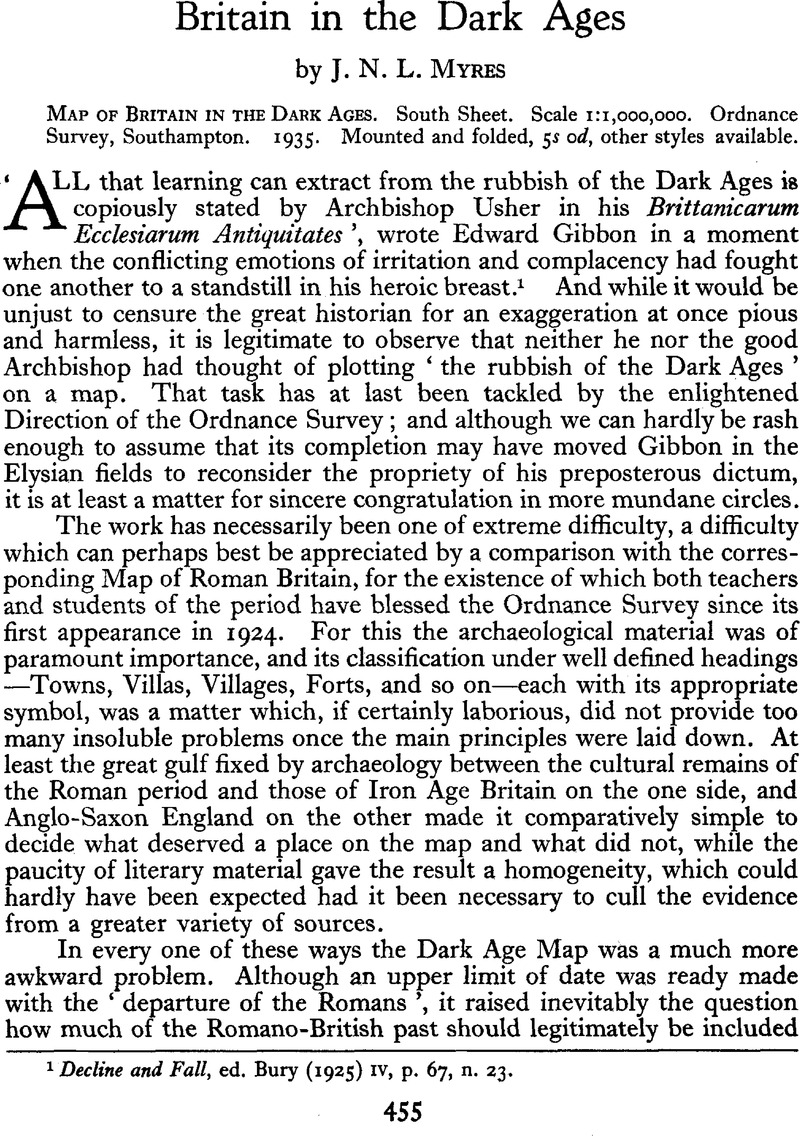Published online by Cambridge University Press: 02 January 2015

1 Decline and Fall, ed. Bury (1925) 4, p. 67, n. 23.Google Scholar
2 H.E. v. 2.
3 Mention must here be made of the great debt which all students of this topic and the compilers of the map owe to Professor Ekwall’s English Place-names in -ing (Lund, 1923). He did not however attempt to date his material by comparison with that of the archaeologists, and his suggestion that the ‘-ingas’ names as a whole are ‘not much later than c. 500’ (p. 115) has not commanded universal assent for it depends upon the acceptance of the traditional story of the West Saxon advance from Southampton Water. See below, p. 464, for further treatment of this aspect of the question.
4 Stenton, , Introduction to the Survey of English Place-Names (1924), pp. 41, 172.Google Scholar
* A distribution-map of names in -ingaham will be given in future editions of the map.—O.G.S.C.
5 Fox, C. , Archaeology of the Cambridge Region (1923), pp. 245, 295.Google Scholar
6 Bede, H.E., 4, 19.Google Scholar
7 Plumrner’s note on Bede H.E. III, II, conveniently summarizes these changes in the political allegiance of seventh-century Lindsey.
8 Bede, H.E., 4, 16.Google Scholar
9 Vita Wilfridi, c. 41.
10 See ANTIQUITY (1934) 8, p. 191.Google Scholar
11 Vita Wilfridi, c. 42.Google Scholar
12 History of the Anglo-Saxons (1935), 1, p. 131.Google Scholar